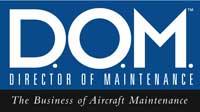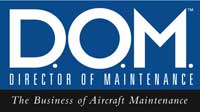
The How and Where of Discrepancy Maintenance Entries after an Annual Inspection

In several of my recent articles, I’ve discussed the requirements for documenting inspections that approved an aircraft for return to service. However, those articles didn’t discuss what happens when the inspection is completed without approving the aircraft for return to service. The latter situation raises questions I would like to discuss with respect to how and where maintenance entries must be made following an annual inspection with resulting discrepancies that are not corrected.
For discussion purposes, let’s assume an aircraft owner brings his or her aircraft in to a mechanic holding an inspection authorization ( “IA”) for an annual inspection. During the inspection, the IA discovers several airworthiness discrepancies. However, rather than have the IA correct the discrepancies and approve the aircraft for return to service, the aircraft owner instructs the IA to sign off on the annual inspection with discrepancies as permitted under 14 C.F.R. § 43.11(a)(5). The aircraft owner then wants to obtain a ferry permit from the FAA in order to fly the unairworthy aircraft to another facility to have the discrepancies corrected and the aircraft then returned to service in an airworthy condition.
In order to arrange for the ferry permit, the aircraft owner asks the IA to make the § 43.11(a)(5) entry (words to the effect that, “I certify that this aircraft has been inspected in accordance with an annual inspection and a list of discrepancies and unairworthy items dated ____ has been provided for the aircraft owner or operator”) on a self-adhesive sticker rather than in the aircraft maintenance logbook. The aircraft owner’s rationale is that he or she wants to avoid having to bring the aircraft maintenance logbook in the aircraft during the ferry flight to the other facility. However, the IA tells the aircraft owner that his or her plan would be illegal because the maintenance record must be in the aircraft maintenance logbook. Who is right?
According to the FAA, the aircraft owner is right. Although the applicable regulations describe the types of maintenance records that must be made and kept, the regulations do not set forth the format or form of the record. Section 43.11(a) requires that the maintenance entry be made in the “maintenance record of that equipment.” That regulation does not require that the maintenance record be a logbook, a collection of self-adhesive stickers, or anything else for that matter. As a result, the aircraft owner may determine what is used for the maintenance record, even if the IA (and common sense) suggest that the record should be in some form of logbook rather than a sticky note.
Next, the aircraft owner asks the IA to prepare the required § 43.11(b) list of discrepancies and airworthiness items as a separate document rather than placing the list in the aircraft’s maintenance logbook. The document would be signed and dated by the IA, who would keep a copy, and also countersigned by the aircraft owner acknowledging his or her receipt of the list. The aircraft owner’s rationale for this request is that 14 C.F.R. § 91.417(b)(3) requires the aircraft owner to retain the § 43.11(b) discrepancy list only until the discrepancies have been corrected and the aircraft returned to service. However, if the discrepancy list is documented in the aircraft maintenance record along with the § 43.11(a)(5) entry, then that entry must be retained for at least one year or until the next annual inspection, whichever comes first per § 91.417(b)(1). As a practical matter, once an entry is made in the aircraft’s maintenance record/logbook it usually stays in the record/logbook indefinitely.
Once again, the IA insists that the discrepancies and airworthiness items had to be documented in the aircraft maintenance logbook along with the § 43.11(a)(5) entry. However, the FAA again agrees with the aircraft owner. According to the FAA, the list of discrepancies that §§ 43.11(a)(5) and (b) require the IA to provide to the aircraft owner is not a maintenance record that must be entered in the aircraft’s maintenance record. Thus, the list may be prepared on a separate piece of paper, or some other medium separate from the aircraft maintenance record/logbook. The only other duty of the IA once he or she has provided the aircraft owner with the § 43.11(a)(5) certification and the § 43.11(b) list of discrepancies is to placard inoperative instruments and the cockpit controls of inoperative equipment. The IA can then send the aircraft owner on his or her way.
What’s an IA to do? First, know what the regulations require. Next, remember that it is the owner’s aircraft and the owner’s maintenance record for that aircraft. You may not agree with the aircraft owner’s decisions, but you are required to follow the regulations. However, you may also want to take some of the burden off your shoulders and put it with the aircraft owner by having the aircraft owner specifically acknowledge the discrepancies with the aircraft and the risk the aircraft owner is assuming by not permitting you to correct the discrepancies. Thorough disclosures and sign off by the aircraft owner could go a long way in defending yourself if something bad happens after the aircraft leaves your facility.
 Greg Reigel is an aviation attorney, author and pilot. He holds a commercial pilot certificate with an instrument rating and can fly single-engine land and sea, as well as multi-engine land aircraft. His practice concentrates on aviation litigation, including insurance matters and creditor’s rights, FAA certificate actions and transactional matters. He represents clients throughout the country on aviation law matters. He also an adjunct professor at Minnesota State University-Mankato where he teaches aviation law and at William Mitchell College of Law where he is an instructor in the advocacy course. He can be reached via e-mail at greigel@aerolegalservices.com.
Greg Reigel is an aviation attorney, author and pilot. He holds a commercial pilot certificate with an instrument rating and can fly single-engine land and sea, as well as multi-engine land aircraft. His practice concentrates on aviation litigation, including insurance matters and creditor’s rights, FAA certificate actions and transactional matters. He represents clients throughout the country on aviation law matters. He also an adjunct professor at Minnesota State University-Mankato where he teaches aviation law and at William Mitchell College of Law where he is an instructor in the advocacy course. He can be reached via e-mail at greigel@aerolegalservices.com.
